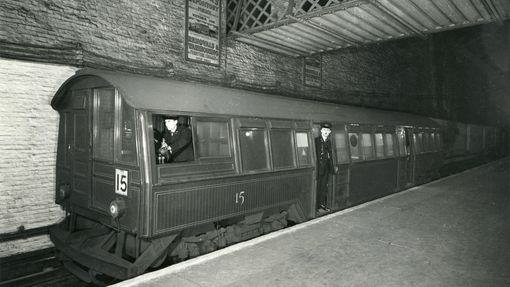
The Jubilee line
Key facts
Length: 36.2km
Stations: 27
Opened: 1979
Introduction

The Jubilee line covers 36km of track from Stanmore in the north-western suburbs into the West End and eastwards, via Waterloo and Canary Wharf, to Stratford. The 1979 line was mostly older stations and infrastructure, given a facelift; the world class architecture of the 1990s extension seemed ultra-modern and futuristic in comparison.
Why is it called the Jubilee line?
It is named after Queen Elizabeth II’s Silver Jubilee in 1977, though it didn’t open until two years later. During planning and most of its construction it had been called the Fleet line, after the river flowing underneath London.
History
The Jubilee line opened as a ‘new’ line in 1979, though it had been proposed 30 years earlier, had no new buildings, and served some stations going back to the 1860s. The only truly new part was the 4km of twin tunnels between Baker Street and Charing Cross.
The rest of the line to the north transferred from the Bakerloo, including the Swiss Cottage-St John’s Wood section, which was originally built as an extension to the first underground, the Metropolitan Railway, in 1868. The four stations on the new section each linked to other lines, relieving congestion at Baker Street, and the Bakerloo’s West End interchanges.
Did you know?
The Jubilee line is the only Tube line that has interchanges with every other Underground line, including the Elizabeth line, plus the Docklands Light Railway (DLR), Overground and six National Rail stations
Extensions eastwards had been included in earlier plans but were not pursued in the first phase of the line. The idea rose again as the Docklands area grew into a new financial centre and was recommended in the East London Rail Study in 1989. New plans were approved by Parliament in 1992, with work starting the following year.
Did you know?
There are 118 escalators on the 1990s extension, the same number as on the whole of the rest of the Underground network at the time
The project architect Roland Paoletti enlisted world-famous architects like Richard Rogers and Norman Foster, giving modern architecture a prominence not seen on the Underground since the 1930s heyday of Frank Pick and Charles Holden. All stations include step-free access from street to platforms, and many won awards from bodies including the Royal Institute of British Architects (RIBA) and the Royal Fine Art Commission Trust.
Did you know?
The Jubilee line is currently the only Underground line to have full-height platform screen doors, which it has on its larger stations on the 1999 extension. These doors prevent people from jumping or falling onto the track, prevent litter depositing upon the track, reduce dirt circulating around the network and improve airflow.
















